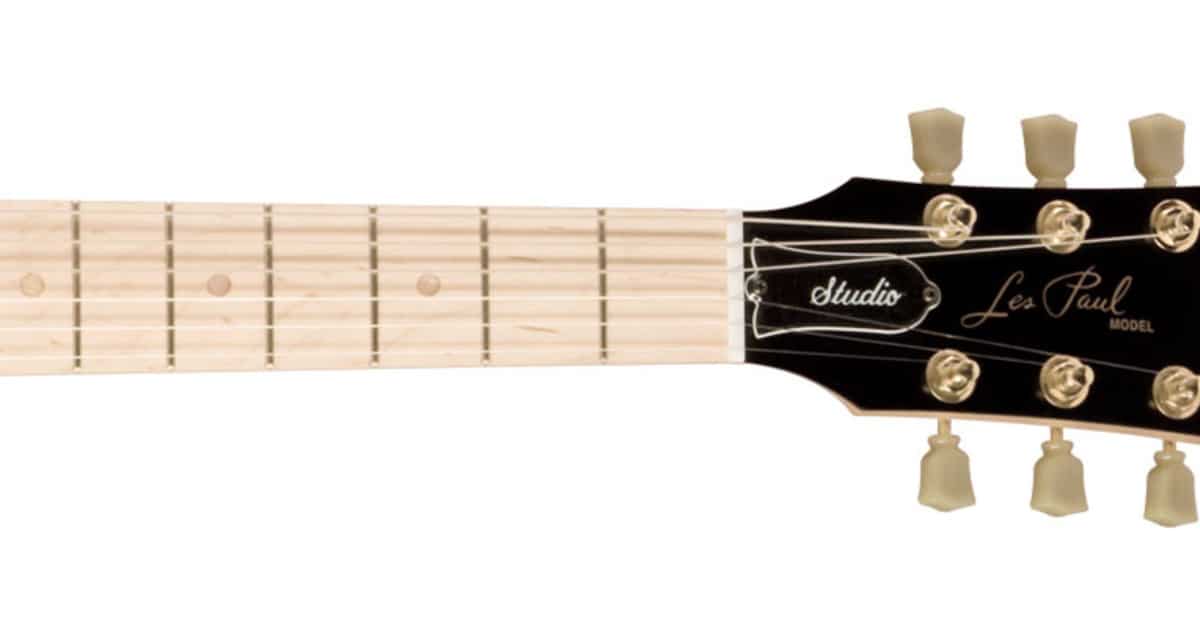While it is possible to use pine for a guitar neck, it is not ideal in multiple ways. Pine is more likely to bow and change shape over time, and also more prone to dents and damage, as it is a softwood.
Throughout the rest of this article, I explain what qualities guitar neck wood should ideally have, the risks of using pine for a guitar neck, and what you can do to counteract some of the weaknesses if you really want to proceed with a pine guitar neck.
Qualities of Good Guitar Neck Wood
The wood for a guitar neck ideally needs to be strong, and preferably dense.
Guitar Neck Strength
The need for a guitar neck to be strong is generally understood. Guitar strings when tuned to correct pitch place quite a bit of strain on the guitar neck, so the guitar neck needs to be able to withstand this tension, ongoing, without bowing, bending, or breaking.
Guitar Neck Wood Density
The density of a guitar wood is also important, especially in acoustic guitar for the tone of the guitar overall. The neck itself doesn’t contribute to the tone the guitar makes, but you ideally want the neck to absorb as few vibrations as possible so that most of the vibrations go toward sound creation.
Difference Between Guiter Neck Wood and Fretboard Wood
Throughout this discussion, please keep in mind the difference between, the guitar neck, and the guitar fretboard. In most cases, there will be different wood used for each, and then have these two pieces glued together. Some guitars, my Stratocaster included, have a single-piece neck with is both neck and fretboard in one, but in most cases, it will be a two-piece.
In this article, we are specifically talking about the neck and not the fretboard.
Risks Of Using Pine As Guitar Neck Wood
Though it can be done, there are multiple reasons Pine is not a good candidate for guitar neck wood.
One of the challenges in discussing the merits of pine as a guitar neck wood is that no two pieces of pine are the same. They have different cuts, and different grains, there are different types of pine, and different batches have differing levels of moisture and age.
I want to be transparent that some people have used pine as the wood for the guitar neck, and it has worked well and continues to work well. However, overall, I am clear in that the lengths of pine that you buy at your hardware store are not good wood to use for a guitar neck.
It is highly unlikely that the pine will snap or break, it is definitely strong enough to withstand the tension provided by guitar string in general, but whether it can do that without slowly changing in shape over time is a different question.
High Moisture Content
The pine you buy from the hardware store is typically high in moisture content. If this is the case, as the wood dries out, it is likely to change shape. If you have used pine as guitar neck wood while it still has a high degree of moisture inside then you could find it bend and warp over time.
Dents Easily
As pine is a softwood is prone to denting easily, any knock or bump against your neck would likely leave an indentation that would then take some work to get out.
Residue From Treatment
If the wood you are using has been pressure treated, this can leaves chemicals soaked into the wood. As these chemicals come out they will corrode your fasteners and also ruin any finish you have applied to the neck (lacquers etc).
High Resin Content
Pine has a high degree of resin content, and if this is not adequately sealed, or dried, then is sill sep through the surface over a long period of time causing the paint/lacquer to bubble.
Difficult To Machine
Pine tends to be an open grain timer and has lots of knots in it. These things make it difficult to machine.
Tips If You Use Pine For a Guitar Neck
If you do proceed with using pine for a guitar neck, the following tips might help you avoid some of the potential downsides that can be associated with pine as wood for guitar necks.
Use Old Dry Pine
If at all possible, find the modest and driest pine you possibly can. Old slow growth pine is going to have a much better and stringer grain, and the age will mean the wood has already had plenty of time to dry out, minimizing the risk of moisture and or sap coming out through your finished surface.
Consier Using a Laminated Structure
Laminated timber is where multiple thin slices of timber are glued together. This creates a much stronger piece of wood. So doing this will minimize the chance of further bending and bowing from your guitar neck.
Carbon Fibre Reenforcement Rods
You might want to consider inserting some carbon fiber reinforcement rods to maximize the strength of the guitar neck. Like lamination, this can help with the overall strength of the guitar neck.
The truss rod you insert is not designed to be used as a source of strength, just to control the overall curvature of the neck, so if you need further reinforcement, use dedicated rods, rather than applying undue pressure to your truss rod.
Final Thoughts
In general, there is a reason pine is not widely used in guitar necks. It is generally prone to dents, hard to work with, and there is an increased risk of bending and bowing over time. Though there are measures you can take to minimize this risk, in most cases you would be better crafting your neck from a different timber, better suited for this purpose, like Mahogany or Maple.

